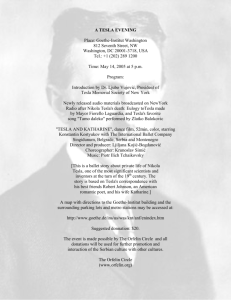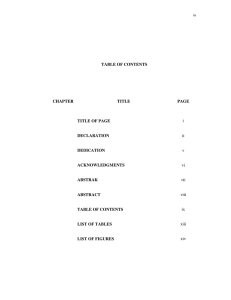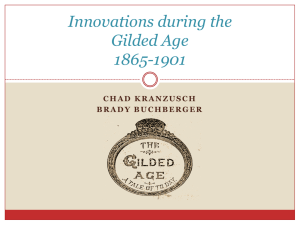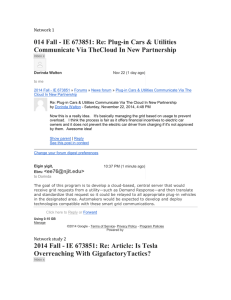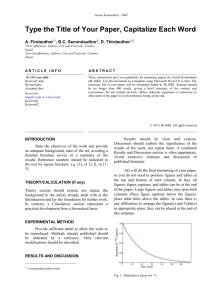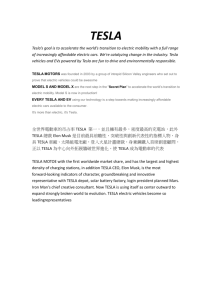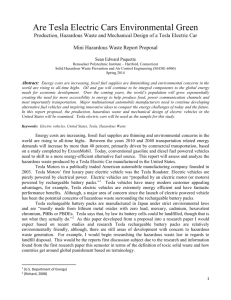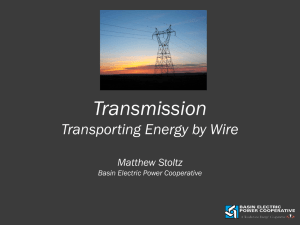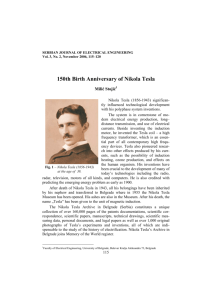Biographies
advertisement
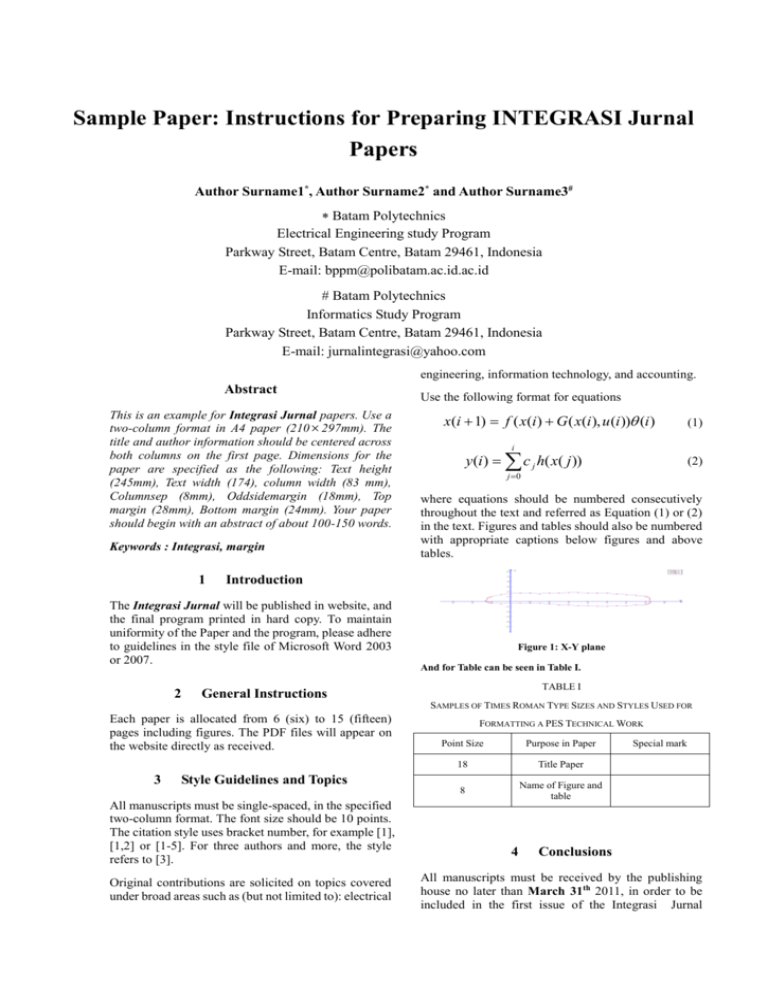
Sample Paper: Instructions for Preparing INTEGRASI Jurnal Papers Author Surname1*, Author Surname2* and Author Surname3# Batam Polytechnics Electrical Engineering study Program Parkway Street, Batam Centre, Batam 29461, Indonesia E-mail: bppm@polibatam.ac.id.ac.id # Batam Polytechnics Informatics Study Program Parkway Street, Batam Centre, Batam 29461, Indonesia E-mail: jurnalintegrasi@yahoo.com engineering, information technology, and accounting. Abstract This is an example for Integrasi Jurnal papers. Use a two-column format in A4 paper (210 297mm). The title and author information should be centered across both columns on the first page. Dimensions for the paper are specified as the following: Text height (245mm), Text width (174), column width (83 mm), Columnsep (8mm), Oddsidemargin (18mm), Top margin (28mm), Bottom margin (24mm). Your paper should begin with an abstract of about 100-150 words. Keywords : Integrasi, margin 1 x(i 1) f ( x(i) G ( x(i ), u (i )) (i ) (1) i y (i) c j h( x( j )) (2) j 0 where equations should be numbered consecutively throughout the text and referred as Equation (1) or (2) in the text. Figures and tables should also be numbered with appropriate captions below figures and above tables. Introduction The Integrasi Jurnal will be published in website, and the final program printed in hard copy. To maintain uniformity of the Paper and the program, please adhere to guidelines in the style file of Microsoft Word 2003 or 2007. 2 Use the following format for equations Figure 1: X-Y plane And for Table can be seen in Table I. TABLE I General Instructions SAMPLES OF TIMES ROMAN TYPE SIZES AND STYLES USED FOR Each paper is allocated from 6 (six) to 15 (fifteen) pages including figures. The PDF files will appear on the website directly as received. 3 FORMATTING A PES TECHNICAL WORK Point Size Purpose in Paper 18 Title Paper 8 Name of Figure and table Style Guidelines and Topics All manuscripts must be single-spaced, in the specified two-column format. The font size should be 10 points. The citation style uses bracket number, for example [1], [1,2] or [1-5]. For three authors and more, the style refers to [3]. Original contributions are solicited on topics covered under broad areas such as (but not limited to): electrical 4 Special mark Conclusions All manuscripts must be received by the publishing house no later than March 31th 2011, in order to be included in the first issue of the Integrasi Jurnal biographies and photos is included in the eight-page limit. The following is an example of the text of a technical biography: Website and hard copy. Acknowledgment The following is an example of an acknowledgment. (Please note that financial support should be acknowledged in the unnumbered footnote on the title page.) The authors gratefully acknowledge the contributions of Sumarto and Tarmijan for their work on the original version of this document. References References are important to the reader; therefore, each citation must be complete and correct. There is no editorial check on references; therefore, an incomplete or wrong reference will be published unless caught by a reviewer or discusser and will detract from the authority and value of the paper. References should be readily available publications. List only one reference per reference number. If a reference is available from two sources, each should be listed as a separate reference. Give all authors' names; do not use et al. Samples of the correct formats for various types of references are given below. [1] A. Author 1, “Article number one”, Automatica, 29 (10), pp.xxxx-xxxx, 19xx. [2] B. Author 2 and C. Author 3, “Article number two”, Proceedings of the 36th IEEE Conference on Decision and Control, Tampa-Florida, USA, pp.xx-xx, 1998. [3] D. Author4, et. al., Book number one, Prentice Hall Inc., New York, USA, 2009. [4] E. Author5, “InBook number one”, in Book number two, (Eds.: F. Author6 and G. Author7), Springer, Berlin, Germany, pp. xxxx-xxxx, 2009. [5] H. Author8, “Thesis title one”, PhD Thesis, The Australian National Australia, 2009. University, Canberra, Biographies A technical biography for each author must be included. It should begin with the author’s name (as it appears in the byline) and IEEE membership history. A photograph and an electronic file of the photo should also be included for each author. The photo should be black and white, glossy, and 2.54 centimeters (1 inch) wide by 3.18 centimeters (1.25 inches) high. The head and shoulders should be centered, and the photo should be flush with the left margin. The space required for the Nikola Tesla (M’1888, F’17) was born in Smiljan in the Austro-Hungarian Empire, on July 9, 1856. He graduated from the Austrian Polytechnic School, Graz, and studied at the University of Prague. His employment experience included the American Telephone Company, Budapest, the Edison Machine Works, Westinghouse Electric Company, and Nikola Tesla Laboratories. His special fields of interest included high frequency. Tesla received honorary degrees from institutions of higher learning including Columbia University, Yale University, University of Belgrade, and the University of Zagreb. He received the Elliott Cresson Medal of the Franklin Institute and the Edison Medal of the IEEE. In 1956, the term "tesla" (T) was adopted as the unit of magnetic flux density in the MKSA system. In 1975, the Power Engineering Society established the Nikola Tesla Award in his honor. Tesla died on January 7, 1943.
